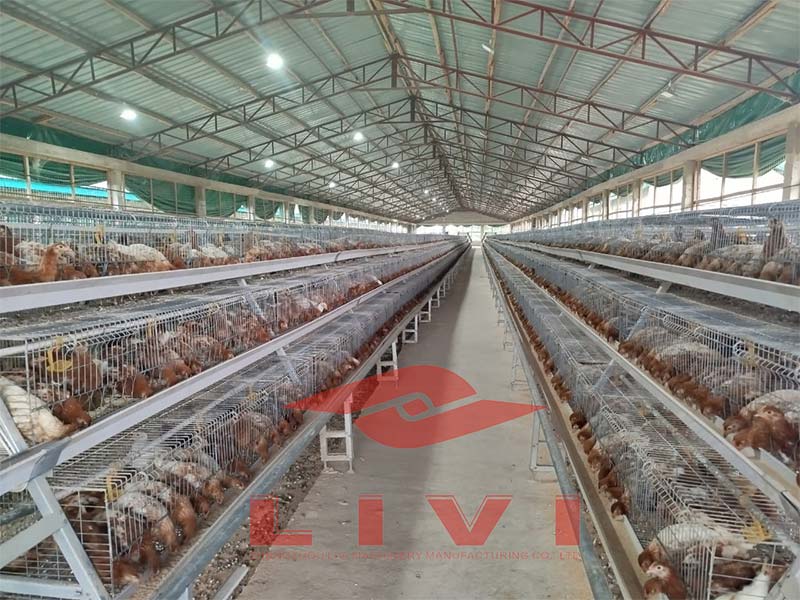
The poultry farming industry is rapidly evolving with advancements in technology and farming practices. One of the critical components for a successful poultry farm, especially in its initial stages, is an efficient chick brooder cage system. This guide provides a detailed overview of setting up an effective brooder system, covering key aspects such as design, equipment, management practices, and benefits.
1. Understanding the Importance of a Chick Brooder Cage System
A chick brooder cage system is essential for raising healthy and robust chicks. It provides a controlled environment that mimics the natural warmth and safety provided by a brooding hen. This controlled setting is crucial for the early development stages of chicks, significantly impacting their survival rates and overall health.
Key benefits of an effective brooder cage system include:
- Improved Survival Rates: By maintaining optimal temperature and humidity levels, the system ensures that chicks are kept warm and comfortable, reducing mortality rates.
- Enhanced Growth Rates: Consistent access to feed and water, along with a stress-free environment, promotes faster growth and development.
- Disease Prevention: A clean and well-ventilated brooder reduces the risk of respiratory diseases and infections, ensuring healthier flocks.
2. Essential Components of a Chick Brooder Cage System
An efficient brooder cage system comprises several key components that work together to create an optimal environment for chicks. These include:
- Cages: The design and material of the cages should ensure proper ventilation and easy cleaning. A-type brooder cages are widely preferred due to their space-efficient design and ease of management.
- Heating System: Maintaining the right temperature is crucial. Heating elements such as heat lamps or infrared heaters are commonly used to provide the necessary warmth.
- Feeding and Watering Systems: Automated feeding and watering systems ensure that chicks have continuous access to food and water, reducing labor and preventing contamination.
- Manure Cleaning System: An automated manure cleaning system, such as a scraper, helps maintain hygiene by regularly removing waste, thereby reducing the risk of disease.
- Lighting: Proper lighting is essential for the chicks’ growth and activity levels. It helps regulate their biological clock and encourages feeding and drinking.
3. Setting Up Your Chick Brooder Cage System
Setting up a chick brooder cage system involves careful planning and consideration of several factors to ensure the system functions optimally. Here’s a step-by-step guide:
- Site Selection and Preparation: Choose a location that is easily accessible and has adequate space for the brooder setup. Ensure the site is well-ventilated and protected from harsh weather conditions.
- Installation of Cages: Install the A-type brooder cages, ensuring they are securely fixed and properly spaced to allow sufficient airflow between them.
- Heating System Setup: Position the heating elements at appropriate heights and distances to evenly distribute warmth throughout the brooder. Use thermostats to monitor and control the temperature.
- Automated Feeding and Watering Systems: Install the feeding and watering systems, ensuring they are easily accessible to the chicks. Regularly check for any blockages or malfunctions.
- Manure Cleaning System: Set up the manure cleaning system, ensuring it operates smoothly and efficiently. Schedule regular maintenance checks to avoid any disruptions.
- Lighting Arrangement: Install lighting fixtures that provide adequate illumination without causing stress to the chicks. Use timers to regulate the light cycles.
4. Best Practices for Managing a Chick Brooder Cage System
Effective management practices are essential to maximize the benefits of your brooder cage system. Here are some tips to ensure optimal performance:
- Regular Monitoring: Frequently check the temperature, humidity, and ventilation within the brooder to ensure they remain at optimal levels. Make adjustments as necessary to maintain a comfortable environment.
- Hygiene Maintenance: Clean the cages, feeding, and watering systems regularly to prevent the buildup of waste and bacteria. Ensure the manure cleaning system operates efficiently.
- Health Checks: Conduct regular health checks on the chicks to identify and address any signs of illness early. Isolate sick chicks to prevent the spread of diseases.
- Consistent Feeding and Watering: Ensure the automated systems provide consistent access to fresh feed and clean water. Monitor the systems for any malfunctions or blockages.
- Record Keeping: Maintain detailed records of the chicks’ growth rates, health status, and environmental conditions. This information is valuable for making informed management decisions and improving future setups.
5. Advantages of Using an Automated Chick Brooder Cage System
Implementing an automated chick brooder cage system offers several advantages, including:
- Labor Efficiency: Automation reduces the need for manual labor, allowing farmers to manage larger flocks with ease.
- Consistency: Automated systems provide consistent conditions, ensuring the chicks receive the same level of care and resources at all times.
- Cost Savings: While the initial investment may be high, automation reduces long-term operational costs by minimizing labor and improving resource efficiency.
- Scalability: Automated systems are easily scalable, making it simple to expand the operation as needed without compromising on efficiency or quality.
- Improved Animal Welfare: Consistent care and a clean environment enhance the welfare of the chicks, leading to healthier and more productive flocks.
Conclusion
Setting up an efficient chick brooder cage system is a vital step in ensuring the success of a poultry farming operation. By understanding the importance of each component and following best practices for installation and management, farmers can create an optimal environment that promotes the health and growth of their chicks. The benefits of automation and proper management are manifold, leading to higher survival rates, improved growth, and overall better performance of the poultry farm.
Investing in a high-quality chick brooder cage system is an investment in the future of your poultry business. By providing your chicks with the best possible start, you set the foundation for a productive and profitable farming operation







